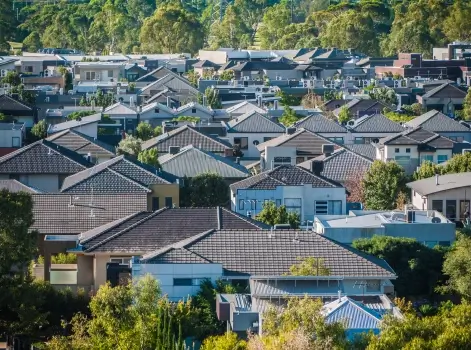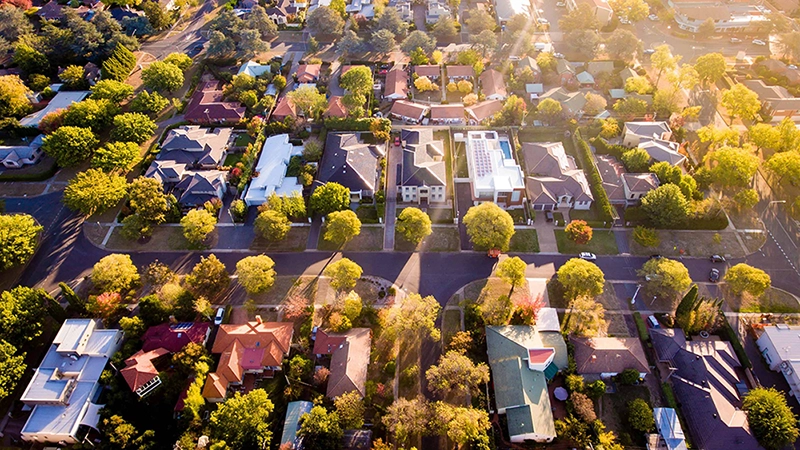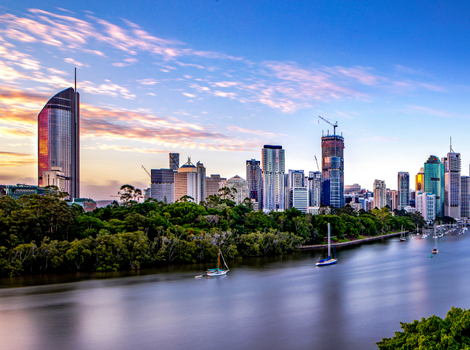Updated: 29 May, 2025
House Price Update
CoreLogic data revealed housing values experienced a 0.6% gain in February 2022. This was the 17th consecutive increase but was the slowest growth experienced since October 2020.
Brisbane and Adelaide experienced the strongest housing market conditions. Over the three months to February 2022, Brisbane’s values rose 7.2%, while Adelaide was up 6.4%. Over the same period, Sydney and Melbourne’s housing values rose 0.85% and 0.2%, respectively.
CoreLogic director of research Tim Lawless said, “Conditions are easing less noticeably across the smaller capitals, especially Brisbane, Adelaide and Hobart, where housing values rose by more than 1% in February. Similarly, regional markets have been somewhat insulated from slowing growth conditions, with five of the six rest-of-state regions continuing to record monthly gains in excess of 1.2%.”
Regional Australia Property Market Update
Regional Australia had a higher rate of growth than capital cities. Over the three months to February 2022, regional housing values rose at 5.7%, compared with 1.8% for combined capitals.
“Regional housing markets aren’t immune from the higher cost of debt as fixed-term mortgage rates rise,” Lawless said. “These markets are also increasingly impacted by worsening affordability constraints, as housing prices consistently outpace incomes. However, demographic tailwinds, low inventory levels, and ongoing demand for coastal or tree-change housing options are continuing to support strong upwards price pressures across regional markets.”
Tip: Interested in buying in a regional area? Use our postcode calculator to determine if most lenders accept the location.
Property Market Update
Here’s what happened to Australia’s property market in February 2022:
- There was a shortage of housing available to purchase in many areas. The total number of properties advertised for sale over the four weeks ending 27 February was 13.3% lower than during the same period a year ago.
- Advertised supply levels are gradually normalising after tracking nearly 25% below the prior years’ level before spring 2021.
- Melbourne’s advertised stock levels tracked 5.5% higher than a year ago and 4.7% above the previous five-year average.
- Sydney’s advertised stock level was 6.3% higher than last year but still 4.2% below the five-year average.
- The cities where values rose more rapidly experienced a lack of properties available to purchase. The total listings in Brisbane and Adelaide were more than 20% lower than a year ago and 40% below the previous five-year average.
- The flow of newly listed properties was 11.3% higher than a year ago and 1.7% above the five-year average.
- Rental growth has rebounded slightly over the past two months. CoreLogic’s rental value index was 0.8% higher in February.
- The rise in rent was focused on the unit market. The national unit rental index was up 0.9% in February and 2.4% over the rolling quarter. The house rent index rose 0.7% in Feb and 2% over the rolling quarter.
- The trend of strong unit rents was visible in Sydney and Melbourne, partly due to a return of arrivals from overseas.
- With slower growth in housing values and firm rental growth, gross yields finally stabilised at 3.2%, the lowest figure on record. If rents continue to rise faster than housing values, yields will improve.
What Is Causing Slower Growth?
Since the pandemic hit in March 2020, housing values have risen 24.6%, which has added $144,000 to the value of the average home.
However, these factors have significantly eased the growth rate in housing values:
- Banks have increased their fixed interest rates since early 2021. Variable rates are set to rise with the cash rate, affecting borrowers.
- Even if mortgage rates are expected to remain below average, households are likely to be sensitive to a higher cost of debt.
- Income growth has not kept up with the pace of growth in housing values. Between March 2020 and December 2021, wages increased by 3.3% compared with a 22.6% lift in housing values. Also, with the end of lockdowns, Australians will probably put less into savings, which will take some demand out of the housing market.
- Credit policies have tightened, lenders are more cautious.
- Supply levels are starting to return to average and above average levels in the large cities, which will provide more choice to buyers, creating less urgency.
Australia’s housing market is not expected to suffer a sudden downturn, though. Open borders will support housing demand. CoreLogic expects strong rental demand in the inner cities popular with foreign arrivals and students.
It should still be some time before interest rates start rising, which gives potential home buyers some leeway.
Do you need to get approved for a home loan? We’re here to help. Call us on 1300 889 743 or enquire online today.










